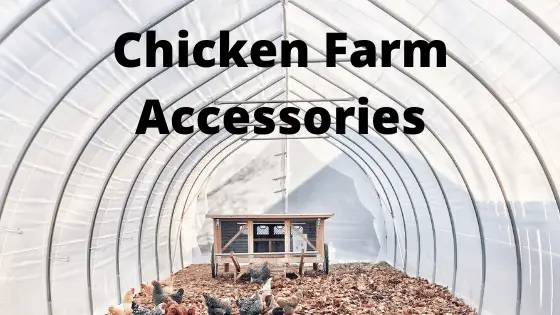Chicken Farm Essentials. A great way of getting farm-fresh eggs to the table is absolutely through chicken farming. It is really relaxing for some people while for others, it is a way for the family to stay together over a project. However, this can easily turn into a sad story when you don’t have chicken farm accessories to get things running. You don’t have to worry about that, whether you have the intention of starting a new business or just because you want to set up a chicken farm in your house. From this article, you will learn exactly what you need. Our focus is on the accessories you will need to run a perfect chicken farm.
As a general rule, when you buy a chicken coop, the feeders and waterers are sold separately. The most important thing to consider when buying any type of feeder is that it must be easy for your chickens to access their food in case they’re not able to find bugs or worms outside. It’s called free-choice feeding because they have constant access to their food.
We raised about 200 Chicks at a time, for meat. We kept ours in the Barn which was easy to control temps in winter – But here are some of the things we gleaned in Raising them
Chicken Farm Essentials / Chicken Coop
Chicken Coop – This is the place where the roosters will mount the females and where the hens will lay eggs. It should, therefore, be very comfortable for them. Some farmers prefer to let them roam freely and sleep anywhere, but if you desire a chicken farm that will produce a good quantity of eggs, it is important you get an excellent housing option.
12 Ways to Make Money by Chicken Farming—Extensive Guidelines for Chicken Farmers
The term “chicken house” can be misleading. It can be something as small as an A-frame coop, or as large as a complete hen house with an attached chicken run. Below is a list of designs that you may possibly be interested in building.
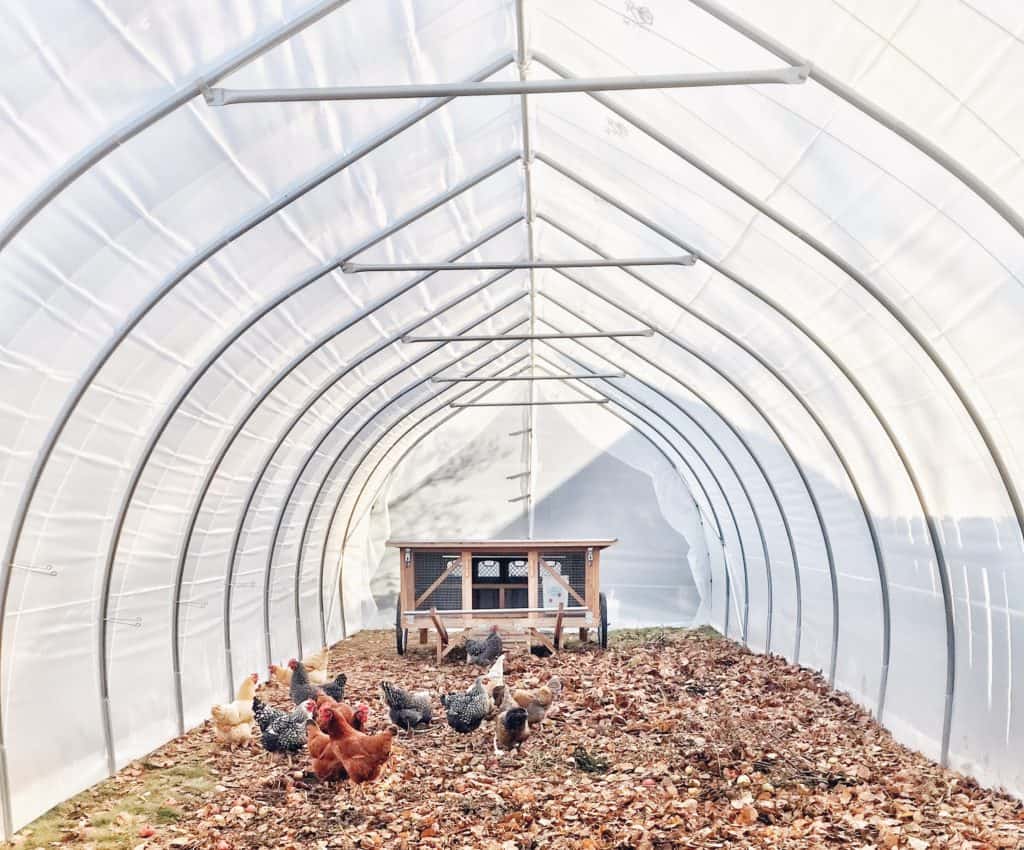
Types of Chicken Coops
- The a-frame coop as mentioned earlier.
- 2) The chicken ark, which is much like the a-frame, only larger and uses multiple stories.
- 3) The box-shaped coop. This one stands a bit taller and includes separate nesting space.
- 4) The hen house. This is the traditional design, complete with windows, a chicken run, and a semi-automated egg collection system.
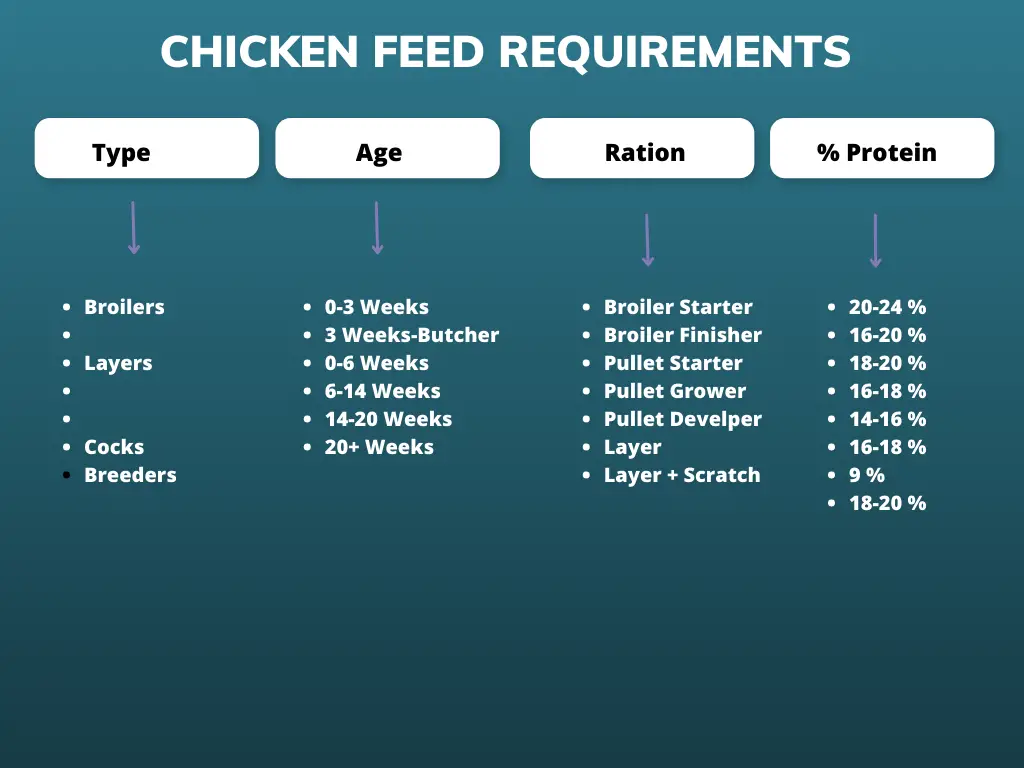
The next step is deciding what your chicken house is going to be made from. You also need to work out what tools you need. Small chicken coops generally only require a few lengths of wood, some chicken wire, and some nails. Still, think about the following:
What wood should I use to build a chicken coop?
Treated pine is generally the best all-round lumber. However, for a high-class finish, go with cedar. It’s naturally resistant against water and rotting.
Chicken wire is your best friend. In fact, you can build a small, portable a-frame coop with just 12 bits of timber and a heap of chicken wire!
Plywood and chipboard are fine to use, especially for enclosing nesting areas. Be careful which glue you choose. It can be toxic to chickens!
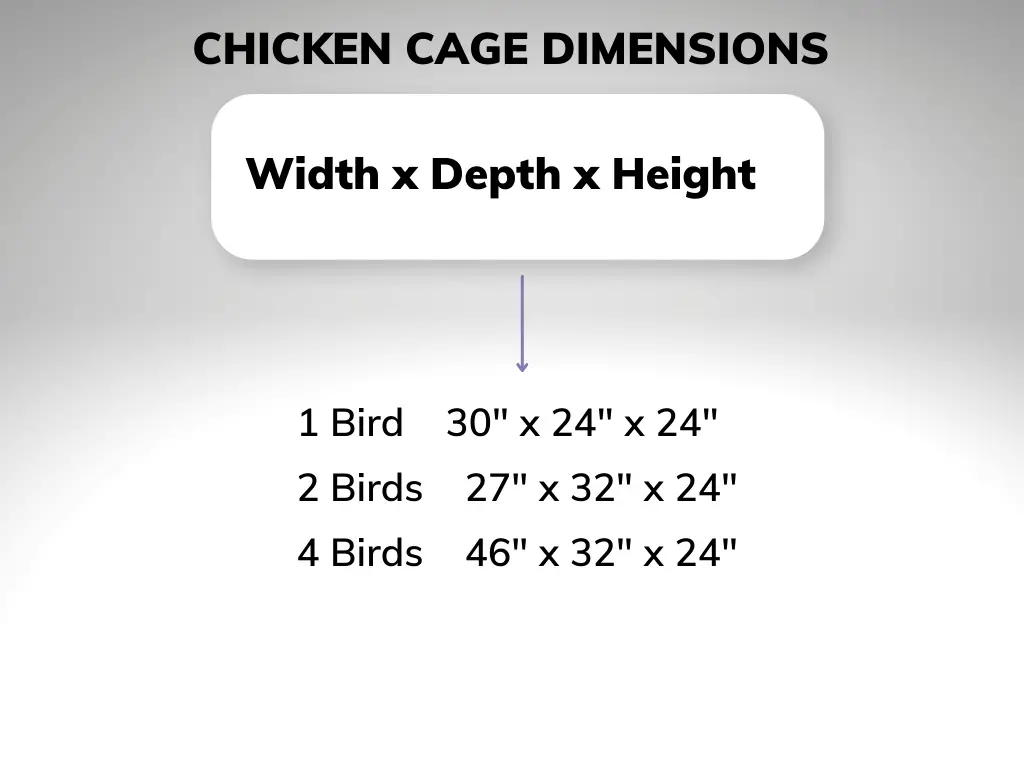
Why are Chicken Coops Raised off the Ground?
It is wise to elevate your chicken coop off the ground, instead of letting it be ground level. The Advantages are many
- Protects from Heavy Rains and the chance of your chicken could be flooded
- Respiratory problems because of excess moisture
- Allows air circulation beneath a chicken coop
- Allows you to clean under chicken Coop
- make it harder for Rats, Mice, and snakes. to get to your chickens and feed
Chicken Coop Floor Material Selection
- Concrete
- Wood
- Wire
- Linoleum
- Rubber Mats
- Painted and sealed woods
- Whatever you use to make sure it is not toxic to Chickens
What should the Floor of a Chicken coop be Covered with?
Depending on where you build your coop and how many chickens you are raising. We have had dirt floors, wire floors, wood shavings, etc. Some of the thoughts of each.
- Dirt Floors – It was very easy to build, just left the ground we had under the coop. Was difficult to keep clean, Chickens soiled it easily and it got moist fast
- Concrete – leave bare 0r Cover
- Straw / Wood Shavings, Sand – We used this and definitely made things cleaner. Easier to clean and change – Smelled good for a while. Made things dryer for our chicks.
- Wire Bottom / Floor – this best described it more as a cage atmosphere. Easier to clean Because feces and urine dropped below. Kept chickens from walking, sitting in feces. It could clean without disturbing chickens. More Fresh air circulation – colder if in a cold climate – drafts – cooler if in Hot environment.
What is the best surface to keep chickens on?
Concrete – seems to be the best hard material – if you are not doing cage style. Concreted is easy to clean, it is moisture-proof, and Predators cannot Burrow under it to get to your chickens. You can then put whatever changeable material on it and change it when necessary. You can also wash it down and sanitize it – which is a great plus. Alos has extreme longevity.
Other materials farmers use are listed here
Chicken Coop Floor Materials
- Concrete
- Wood
- Wire
- Linoleum
- Rubber Mats
- Painted and sealed woods
- Whatever you use to make sure it is not toxic to Chickens
Chicken Coop Floor Wire
Chicken wire for Chicken Flooring is the best from a sanitation standpoint. Urine and Feces can leave the chicken area. Keeps chickens dry. The wire most used is Hardware Cloth 1/2″ squares. Some of the negatives are that it might cause foot skeletal problems in your chickens. It also increases air circulation, which is good in summer, and negative in winter. Chicken poop can be quite potent.
On Plus side – It is easy to clean, has a long life. Immediately keeps chicken and feces separate. Protects from Predators.
- Concrete
- Wood
- Wire
- Linoleum
- Rubber Mats
- Painted and sealed woods
- Whatever you use to make sure it is not toxic to Chickens
Waterproof Chicken Coop Floor
If Your Chicken Coop is on the ground it is wise to make the floor material waterproof / moisture-proof. This will allow easier cleaning of Chicken soiled bedding. You can also wash and sanitize when Needed. It can be made out of Concrete, It can be Wood that you have painted.
Which Direction should my Coop Face?
When Building your coop it thought best to face the window in your coop for the best light in morning and evening. Windows receiving the early morning light helps the general feeling of the coop. Facing East and West
Cages are also better options especially if you want your chickens on open air. Although, there are not the best options if you live in a place with tons of weather changes. Many people choose to stick with cages because they are very easy to clean, but they get dirty faster than any other housing option.
Should I make my Coop Able to close at Night/Bad Weather
Yes if you are able to afford it. It allows you to close up and protect your chickens in times of severe weather. It also will allow you to protect your chicks from Predators. We added chicken wire to all our doors and windows. Allowed the light and air to circulate, but then allowed us to be able to close them up, and helped in the cold of winter.
Feeders
In general, you do not need feeders in chicken houses with runs, as the chickens find their own food. However placing an extra feeder in chicken runs can increase production, especially at times when there is less food available outside. For all other types of chicken coops, the feeders are necessary. You may lose a lot of feed if you scatter it in the ground. If you raise only a few chickens then the hand-filled feeders are the best.
A well-made feeder or through will help your chickens to eat more easily. All you have to do is to deposit the feeds and let them eat. There are different types
Chicken Range Feeders
Linear feeders: it is usually strong and durable, made from a horizontal piece of metal or wood. For chickens and roasters to eat from it without problems, it should be at a low height. It is something you can make, you don’t have to buy it.
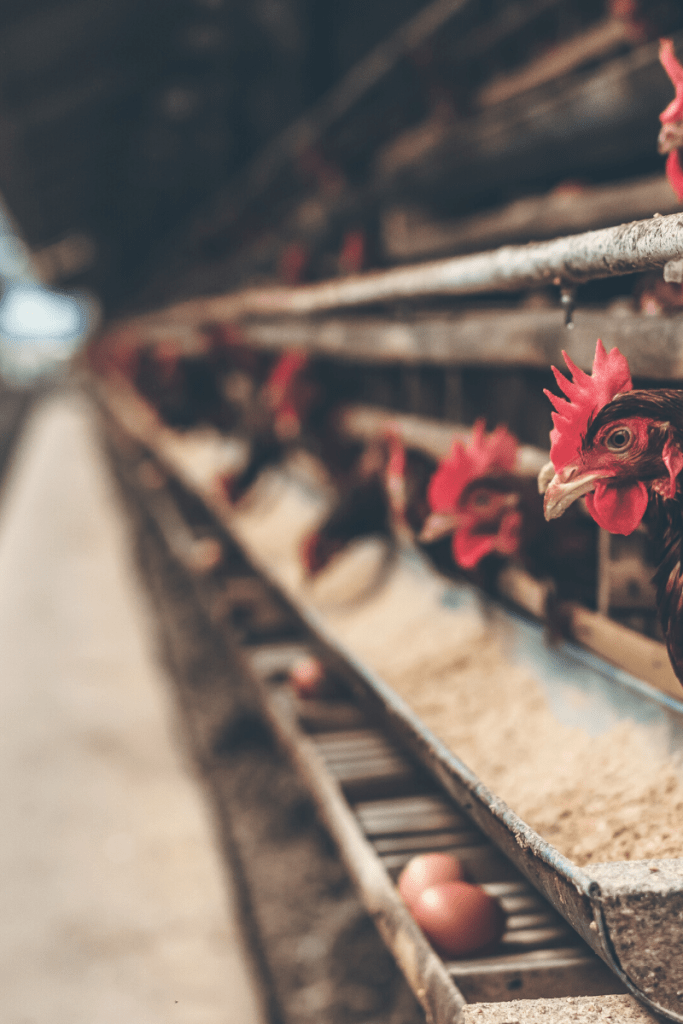
Circular Feeder: In a circular feeder, there is a centerpiece where all the food is placed. It is almost similar to the manual drinker. Some have a separator that allows the chicken the eat individually. Some are designed for large flocks and can hold pounds of food while others are ideally created for small flocks
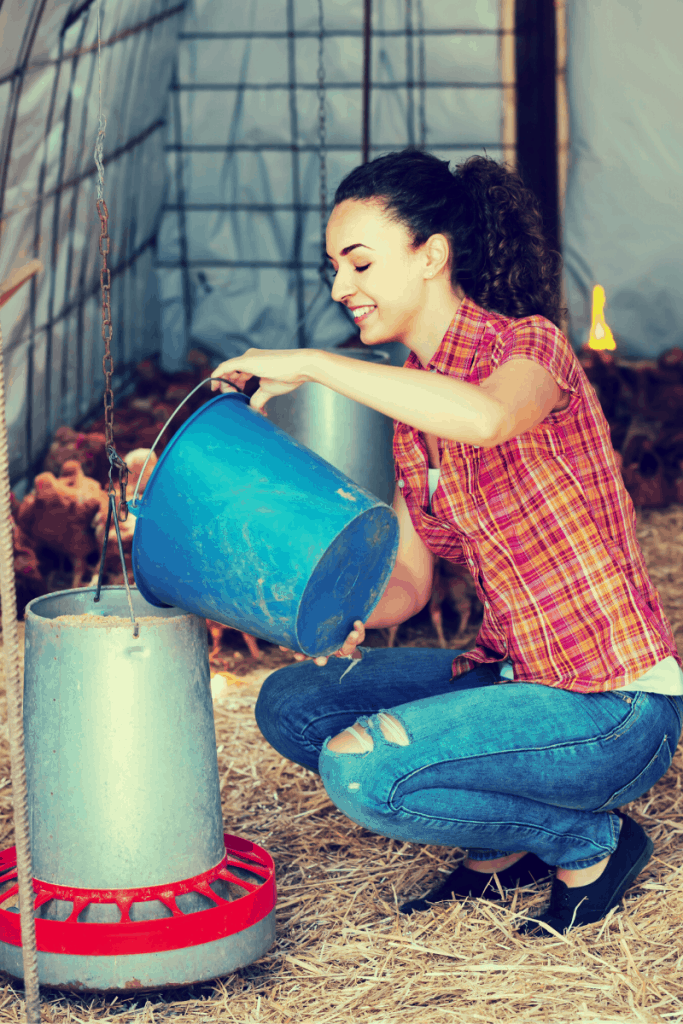
Shell grit box: it is very popular, but it works as a temporary feeder. It usually contains calcium-rich foods outside the coops so that chickens can eat while they are not mating. It contributes to healthy egg production as it generally helps them to grow bigger.
Automatic feeder: this is used by industrial-scale chicken farms. It delivers food directly to the chicken’s nests. It requires a power supply to function and usually cost a lot of money. Its installation requires enough space. However, it is the most effective and less time-consuming option
Watering
Once you have the housing and the comfort for the birds figured out – you’ll want to make sure that the birds can hydrate themselves. Otherwise, you may end up with dehydrated hens that don’t want to lay eggs at all.
Access to a clean abundant source of water is critical to a healthy chicken flock. It becomes challenging because of winter – Freezing, and the chicken easily can fowl up the cleanliness of the water. If your waterer is structured so they can roost on it there will be chicken poop in their water.
It is wise to clean the waterer often, time depends on type and material that it is made of
Types of Chicken Waterers Material Construction
- Stainless
- Plastic – Polyethylene
- Plastic – PET
- Glass
- Galvanized
Chickens also sleep at night so water schedules can be adjusted to be full during daylight hours.
For that, you’ll need to think about the watering equipment. Here are a few to consider:
Large Chicken Waterer
After the housing has been figured out, you’ll have to look for ways of keeping your chickens always hydrated. When your hens are dehydrated, they won’t want to lay eggs at all.
Pan and jar: Chickens easily drink water from it. It is inexpensive. Water that is contained in the jar goes down to the pan. It is not the best option. When you have many chickens to care for, there are other alternatives.
Bell waterer: It is a bell-shaped plastic that is placed with a pipeline in order to move water down to the pan. With some amount of money, you can create a self-controlled system for watering. It is very reliable and effective. In creating a good bell waterer, you would need, a plastic drinker and a valve spring mount.
Commercial Chicken Waterer
Nipple drinker: this type of drinker can be used for any type of housing. However, it may require a bigger investment. It is designed to let water out consistently from its nipple-like opening. The water from the nipple drinker lands onto a jar for the chickens to drink. It can be used in any type of housing but it is very effective in small spaces like chicken coops
Manual drinker: in this type of drinker, all you have to do is just placing the drinker in a good position. The chickens will locate it. It comes in different colors. Chickens love to get close to them because of their bright coated color. They come in different sizes as well. With this type of drinker, you can easily administer vitamins and medicines to the chickens.
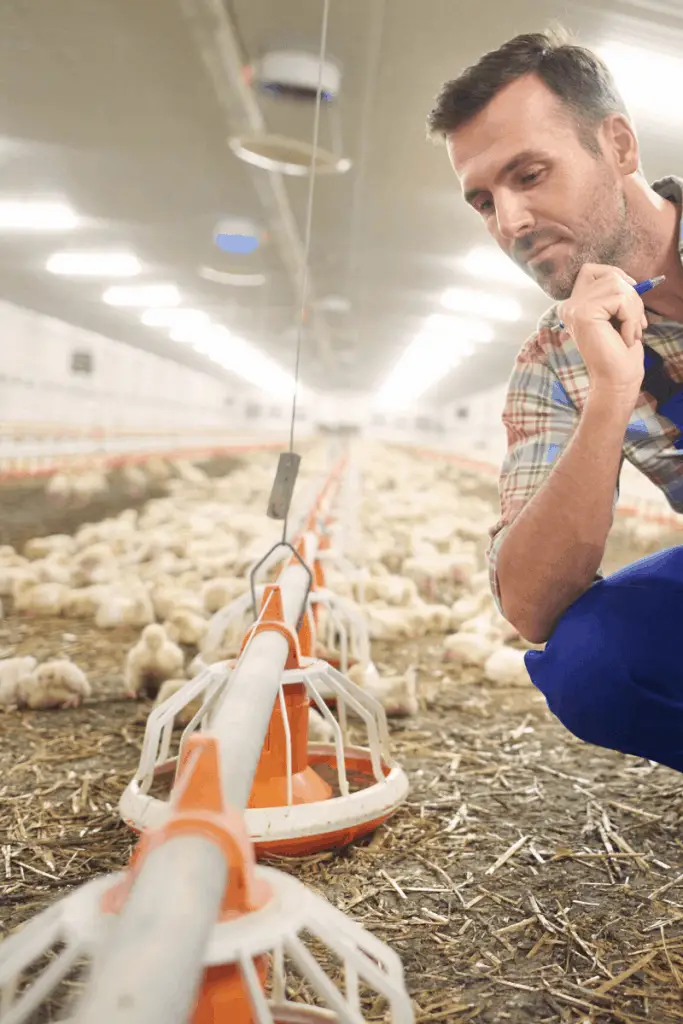
One of the Most Difficult things in raising Chickens in Cold weather, is keeping them watered. The water freezes Quickly – so many resorts to carrying out water twice daily.
What can you put in Water so it Doesn’t Freeze?
- You can add Apple Cider Vinegar – Lowers freezing point 4 degrees
- 3-4 Ping Pong Balls
- If you re using Bucket – you can bury it in-ground – the heat of ground will keep it better thawed – but have to protect chicks from drowning
- Saltwater bottle floating in the waterer
- Adding Olive oil to water – oil never freezes
Heated Chicken Waterer
Most Chicken Farms have gone to using Electric Water Heaters. It keeps water from freezing automatically. There are some good advantages
- Thermostat controlled
- Off when not Freezing
- Saves Labor
- Important Run on GFIC Circuit –
- Light Bulb Heaters
Bedding
If you want your hens to remain, comfortable, warm, happy and healthy and lay a plentiful supply of eggs you should provide them with adequate bedding. Bedding can be in the form of a pile of clean straw, shredded old or used newspapers, or if you want to give your chickens a treat you can buy bedding in a poultry supply store or online.
Bedding inside the coop should provide chickens a soft surface for laying their eggs. This is of course needed to save the eggs from cracking when they land. Straw on the coop floor is also beneficial for your flock because it absorbs odor and droppings and makes cleaning out the coop that much easier.
There are a lot of bedding varieties. But whatever the bedding that you’ve chosen, always make it a point that it is at least two inches thick and is truly absorbent.
Brooding
It is important we go over accessories that will keep the chickens comfortable with the right temperature. There are different alternatives for brooding. Just as they differ, so also are their mechanisms.
Stoves: stoves help to keep the level of the temperature at a stable state. You can choose to use either the charcoal stove or kerosene stove. The only drawback of the stove is the fact that it doesn’t work out for large chicken houses. The stove is only useful in small cages so that the furnace will be sufficient enough to heat up the entire cage.
Gas brooder: some years back, this was the most popular among chicken Farmers. It consists of a heating element with a methane or natural gas line. When the element is heated up, the entire place will become warm.
Infra-Red bulbs: this is very popular because of their effectiveness. It is used by industrial chicken factories. These factories use huge 250-watt bulbs to heat up about 200 chickens.
How long do Chickens need to be under a Heat Lamp
Usually, they need 8 – 10 weeks under a light for warmth Full-size Chickens sleep at night so it is not needed then. We kept a small light bulb hung from the top of the coop for warmth.
Reflectors: These are very similar to the lamp. In reflectors, heat is produced by heating up an element within it. They produce three times the same heat an ordinary lamp produces.
Heaters: these are also used in large industrial settings. They contain coils just like any other heaters, that serve as the heating element. Some are made with adjustable temperatures and are useful in keeping the chickens as comfortable as possible.
Incubators
When chickens are still mating, the best and inexpensive method of hatching eggs is through the use of incubators. Sometimes, hens can’t just take care of their eggs as needed and eggs demand lots of care to develop and eventually hatch. To create a suitable environment for proper egg hatching, incubators are the best choice.
Chicken Incubator Humidity
The temperature needs to be set at 99.5 for the length of time until the chicks hatch. Humidity is very important and needs to be 50% for the first two weeks and increased to 75%. the Eggs can lose moisture and the chicken embryos will not develop properly. Normal Hen Chicken body temp is 105 – 107 degrees.
Setter: after eggs are laid, this machine helps in incubating them for the first 19 days. It maintains the egg with the right humidity and temperature.
Hatcher: this machine doesn’t have a turning mechanism. It has trays that help in holding the eggs and chicks after they are born. It can act both as an incubator (incubating eggs in their last few days) and hatcher (when the chicks are born).
Dust Baths
If you see your chickens digging a shallow hole and creating a mess with dirt, they are dust bathing! Chickens enjoy doing this because they are actually protecting themselves from parasites and those creatures that find it interesting to live inside their legs and feathers. Therefore, it is necessary to have dust baths. If you have a dry area in your chicken run that has patches of fresh ground, it’s the perfect spot for chickens to do their thing. But if your run has a hard surface, such as concrete, it is not a problem because there are artificial dust baths available in agricultural
Play Sand for Chicken Dust Bath
When using sand for your Chicken Dust bath. Need to use Children’s Play sand, it does not contain salt which will irritate the chicken’s skin as it takes its dirt spa day.
Cat Litter for Chicken Dust Bath
No, we would not recommend that. Cat litter has chemical absorbents and deodorizers in it. And Chicken will eat it also so it needs to be completely natural.
Chicken Dust Bath Tire
You can take an old car or tractor tire and it makes a wonderful chicken dust bath, just fill it with your favorite dust bath mixture about 12″ deep, and let them have fun. Common materials in Chicken Dust Baths are
- Play sand
- Dry Dirt
- Diatomaceous earth
- Powdered Herbs – sage – Rosemary – Lavender
- Chinchilla Dust – Chinchilla Bath sand
- Wood ash


